The Big Combo (1955)
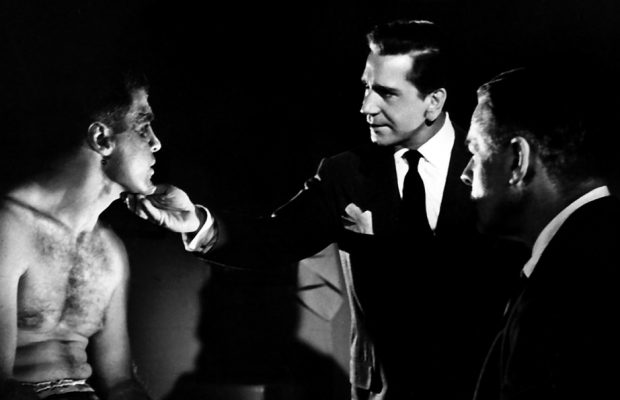
Toronto Film Society presented The Big Combo (1955) on Monday, July 15, 2019 in a double bill with Nocturne as part of the Season 72 Summer Series, Programme 2.
Production Company: Security Pictures, Theodora Productions. Director: Joseph H. Lewis. Producer: Sidney Harmon. Screenplay: Philip Yordan. Cinematography: John Alton. Music: David Raksin. Editor: Robert S. Eisen. Release Date: February 13, 1955.
Cast: Cornel Wilde (Police Lieutenant Leonard Diamond), Richard Conte (Mr. Brown), Brian Donlevy (Joe McClure), Jean Wallace (Susan Lowell), Robert Middleton (Police Capt. Peterson), Lee Van Cleef (Fante), Earl Holliman (Mingo), Helen Walker (Alicia Brown), Jay Adler (Detective Sam Hill), John Hoyt (Nils Dreyer), Ted de Corsia (Ralph Bettini), Helene Stanton (Rita), Roy Gordon (Audubon), Steve Mitchell (Bennie Smith).
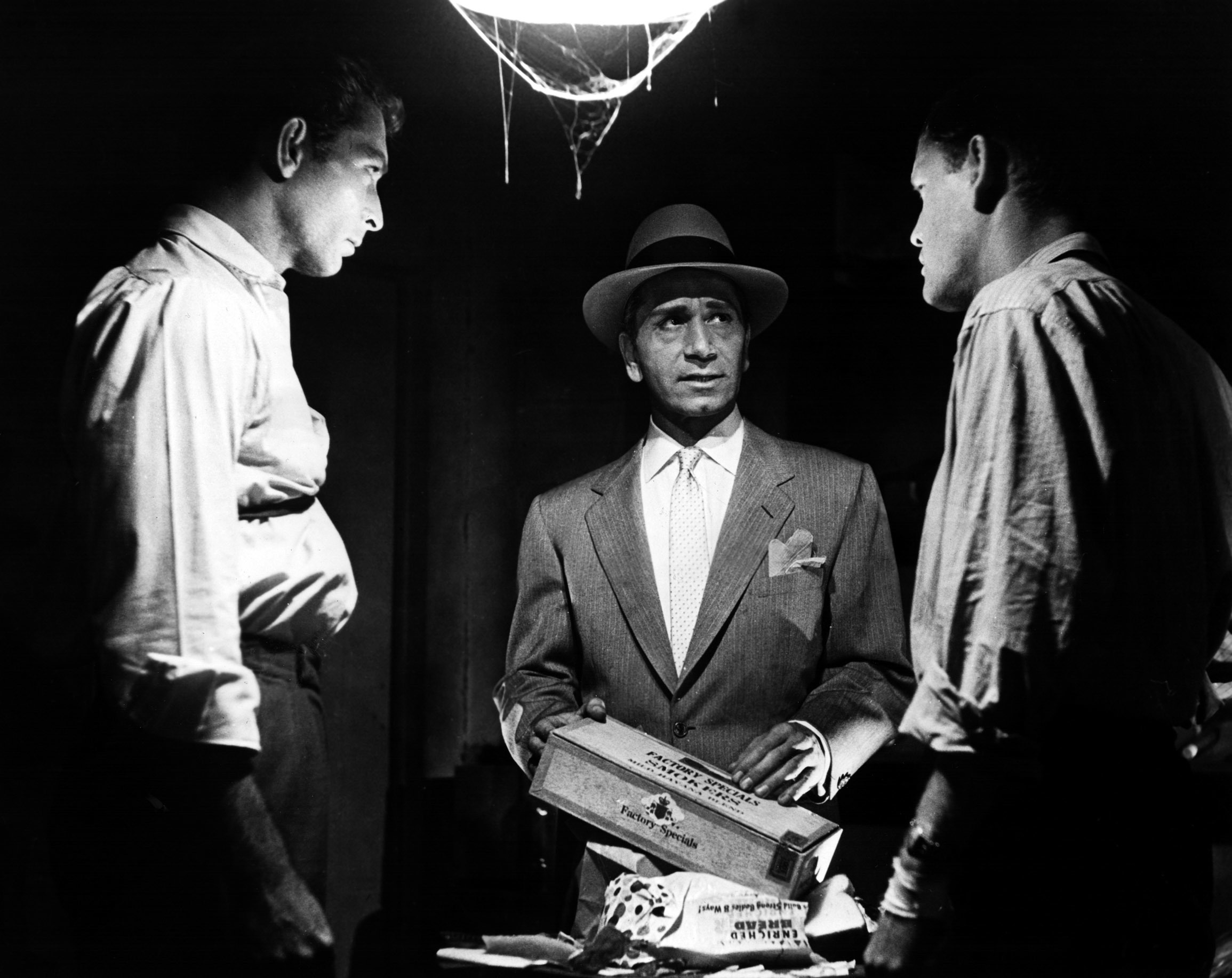
Jean Wallace was 32 when she made tonight’s film. By the age of 18, she worked as a dancer and singer, and had been employed by theatrical producer, Earl Carroll.
She first attempted to break into the movies in 1941 at the age of 17 but only secured a bit role in Ziegfeld Girls after MGM discovered she was underage, 17 and not the required 19 years of age, which would have allowed her to work a full day’s schedule. Her luck changed when she signed a six-month contract with Paramount Studios, which included the compulsory tutor required for a minor, and while there was assigned her first credited role in Louisiana Purchase starring Bob Hope.
When she was 18, Wallace met Franchot Tone, who was recently divorced from Joan Crawford and twice her age, and after a whirlwind romance, they married. The marriage was a rocky one, lasting seven years. During that time, Jean did not work as she was raising two boys, one born in 1943 and the second in 1945. Wallace attempted suicide twice, the first time with sleeping pills during her marriage with Tone, while the second time after their divorce, stabbing herself in the abdomen.
Before or around 1947, she signed a five-year contract with 20th Century Fox but was given little to do after turning down a role in next week’s film, Kiss of Death. Interestingly, she did work in her ex-husband’s 1949 films, Jigsaw and The Man on the Eiffel Tower.
In 1950, she married soldier James Randall, but the marriage was annulled after only five months. She then lost her driver’s license due to driving under the influence and then lost custody of her two children to Tone, each claiming the other an unfit parent.
Things were looking up for Jean when she marries Cornel Wilde in September 1951 and for the rest of her film career, made eight films with her husband, six of which he directed. In 1967, their son was born. Sadly, in 1982, their marriage ended acrimoniously. She died on Valentine’s Day in 1990 at the age of 66.
Having seen Jean Wallace in Storm Fear, which she made the same year as tonight’s film, I was impressed with her performance and have a vivid recollection of her. The Big Combo is considered her best film and along with you, I look forward to seeing it.
Sourced from www.GlamourGirlsoftheSilverScreen.com and IMDb
Introduction by Caren Feldman
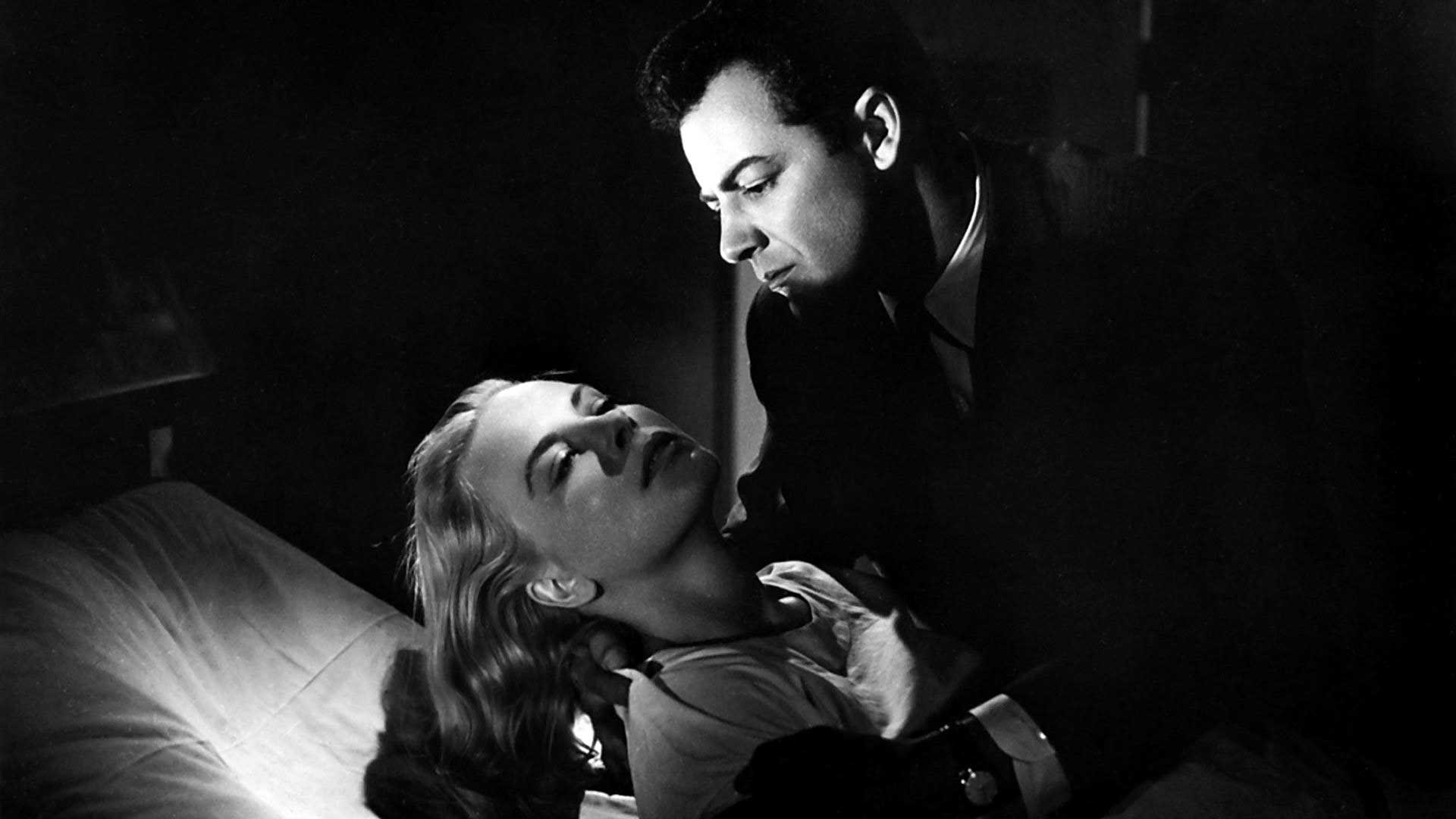
With a title that makes it sound like an episode of Dragnet, The Big Combo may on initial inspection seem a run-of-the-mill gangster picture. But within the opening moments it plunges into a perverse headspace impervious to sunlight and does not look back. In the inky netherworld of the film there are only two types of people: those who wield power and those who submit. “First is first and second is nobody,” is the mantra of psychopathic gangster Mr. Brown (played with satanic intensity by Richard Conte, who replaced a double-booked Jack Palance at the last minute). This stark dichotomy is illustrated by opposites throughout the film: the righteous Police Lieutenant Diamond (Cornel Wilde) against the amoral Mr. Brown. Diamond humbly eats an apple; Brown dines on lobster and wine. Their respective girlfriends are diametrically opposed: Brown dominates the blonde, angelic former concert pianist Susan (Jean Wallace, real-life wife of Wilde), while Diamond obediently kneels at the feet of the carnal brunette burlesque dancer Rita (Helene Stanton). The power and submission roles in the film bounce back and forth. When Brown’s in control, he sits with his back to Diamond, smoking a cigarette and relaying his threats through his hearing-impaired subordinate McClure (Brian Donlevy). When the table is turned, Diamond partners with his polygraph to play free association ping pong with his strapped-down nemesis.
This eccentric film was a co-production of Security Pictures and Theodora Productions. Security was comprised of screenwriter Philip Yordan and former Group Theatre member Sidney Harmon. Cornel Wilde and Jean Wallace formed Theodora Productions. It was distributed by Allied Artists, formerly known as Monogram Pictures. In a 1955 article in The Los Angeles Times, Harmon was candid concerning how slim the budget was on The Big Combo: “We made it in 26 days for a third of what it would cost a major outfit.” He went on to suggest that the key to a successful low-budget film was the script, “for without a better script he cannot tempt the big names.” Furthermore, “A script must be especially written for indie production—with a strict eye to the size and number of sets and how readily they can be built.”
Philip Yordan had come out to Hollywood in 1938 under the employment of William Dieterle and had steadily gained a reputation as a workhorse. Eventually, he became known for lending his name to blacklisted pals or those who just needed some cash and an outlet for their creativity, but from all appearances The Big Combo is solely the work of the Chicago-native writer. There was an idiosyncratic, mercenary nature of a producer to his career. In an interview with Yordan, film historian Pat McGilligan asked, “How about The Big Combo? Are you fond of that picture?” He replied, “No.” Perhaps that terse negative is apt for a film that is more darkness than light, but it’s unfair to the cast and crew that make this movie such rich viewing. Director of Photography John Alton’s contribution is unmistakable; the hyper-stylized photography drenches each scene with threatening shadows.
Director Joseph H. Lewis, amongst the greatest B-movie auteurs, ably commands the cast through envelope-pushing material. In an interview with Robert Porfirio and Carl Macek, Lewis recounted how effective his command of cinema was when the Production Code Committee accused him of “having a filthy mind.” He pleaded innocence: “‘Gentlemen, I don’t understand what you’re talking about.’ And this one guy, this hot-shot, jumped up and said, ‘You know the scene where Dick Conte starts to kiss her, and he goes down on her.’ And I turned on him and accused him. ‘How dare you say a thing like that. You’re the one that has a filthy mind, not me…. We just shot a close-up of a girl.’” As powerful as the imagination can be, it doesn’t have to work too hard to recognize that the film’s henchmen duo, Mingo and Fante—played by Earl Holliman and Lee Van Cleef, respectively—(Van Cleef a decade later immortalized as “The Bad” in Sergio Leone’s The Good, the Bad, and the Ugly) are lovers. Mingo’s panicked, “The cops will be looking for us in every closet!” is not even the campiest line in the film. Other standouts in the cast include John Hoyt as the Swedish antique dealer with a penchant for making himself laugh and Ted de Corsia as the defeated Bettini who accepts death all too readily.
This is a film with scenes that are brutal even by today’s standards, so it’s hardly surprising that critics’ reactions were mixed. The New York Times called it an “open-throttle monotonous serving of mayhem.” The Christian Science Monitor criticized the “gratuitous” torture, calling the film “a parade of grim sensations.” The Los Angeles Times praised the film but conceded, “…The camera dwells too long and too thirstily on [the central torture scene] and other indignities…. But such sadistic ‘thrillers’ have their public and attendance must signify consent if not approval.” The always faithful National Legion of Decency merely objected (but did not condemn) The Big Combo based on “excessive brutality” and “low moral tone.”
Notes by Adam Williams

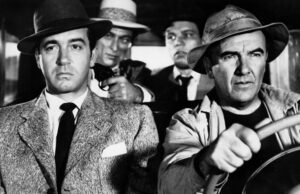
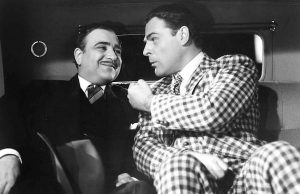
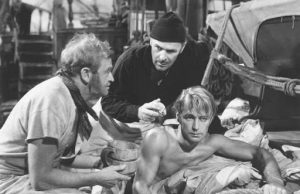






Leave a Reply